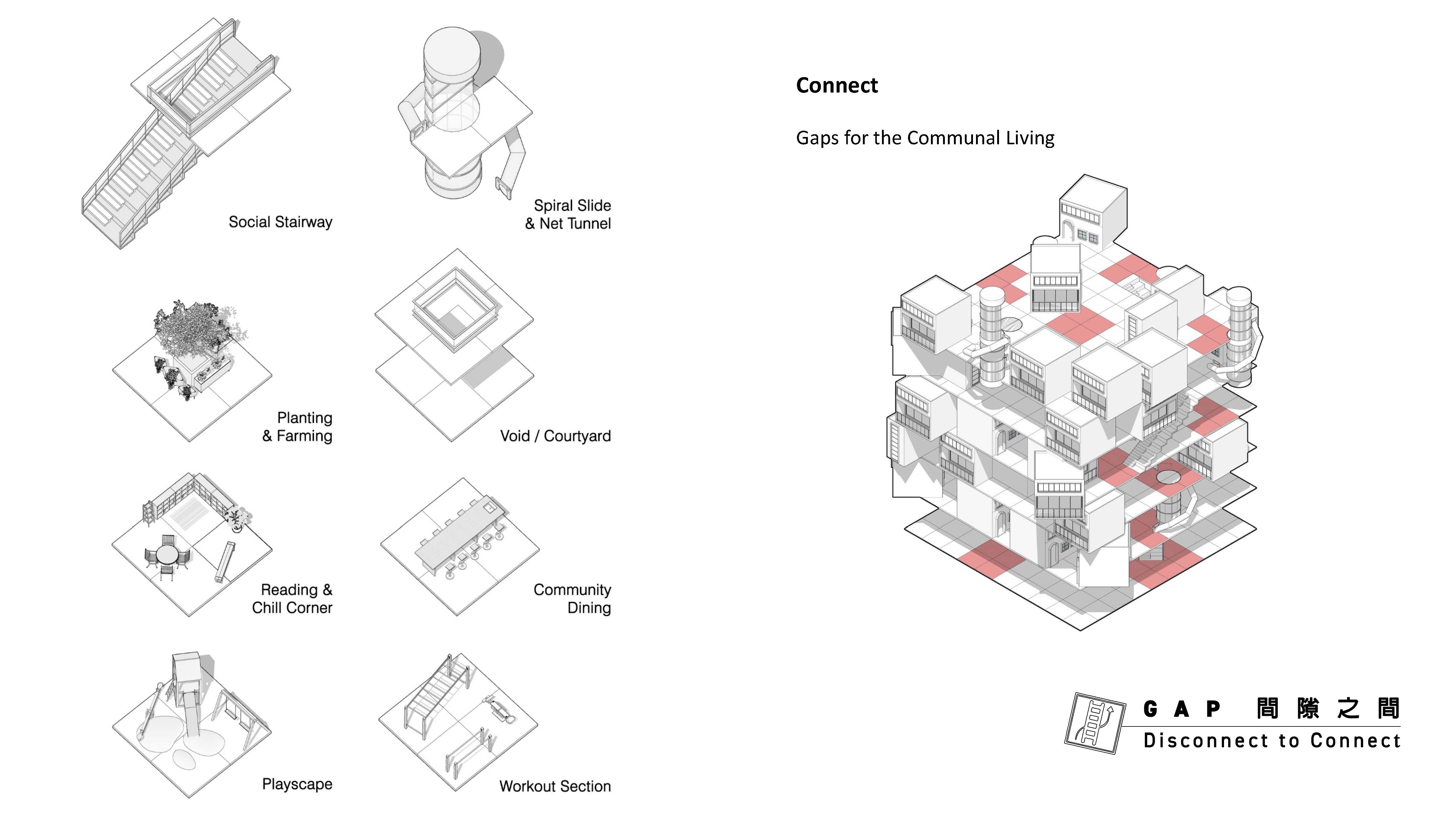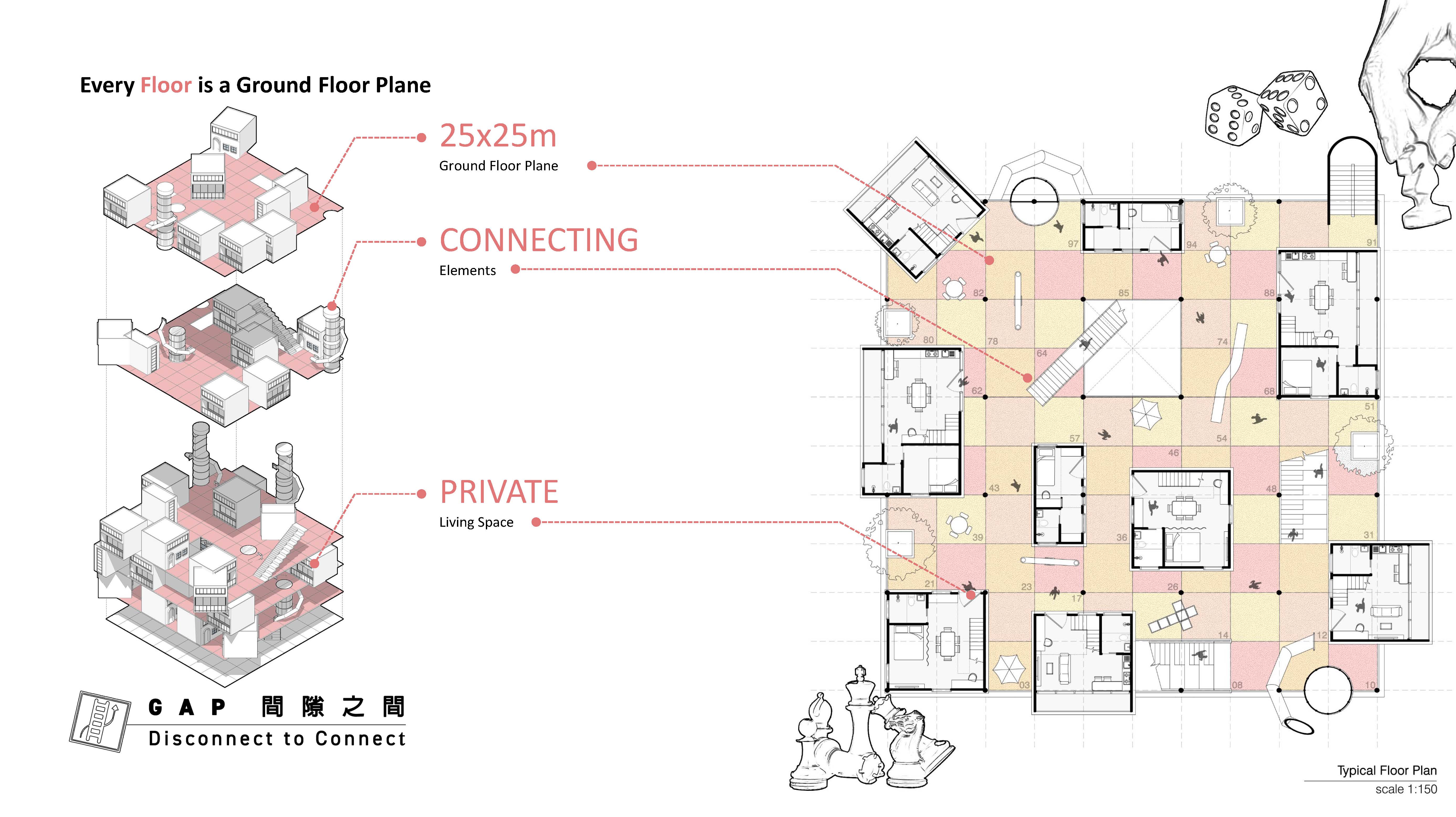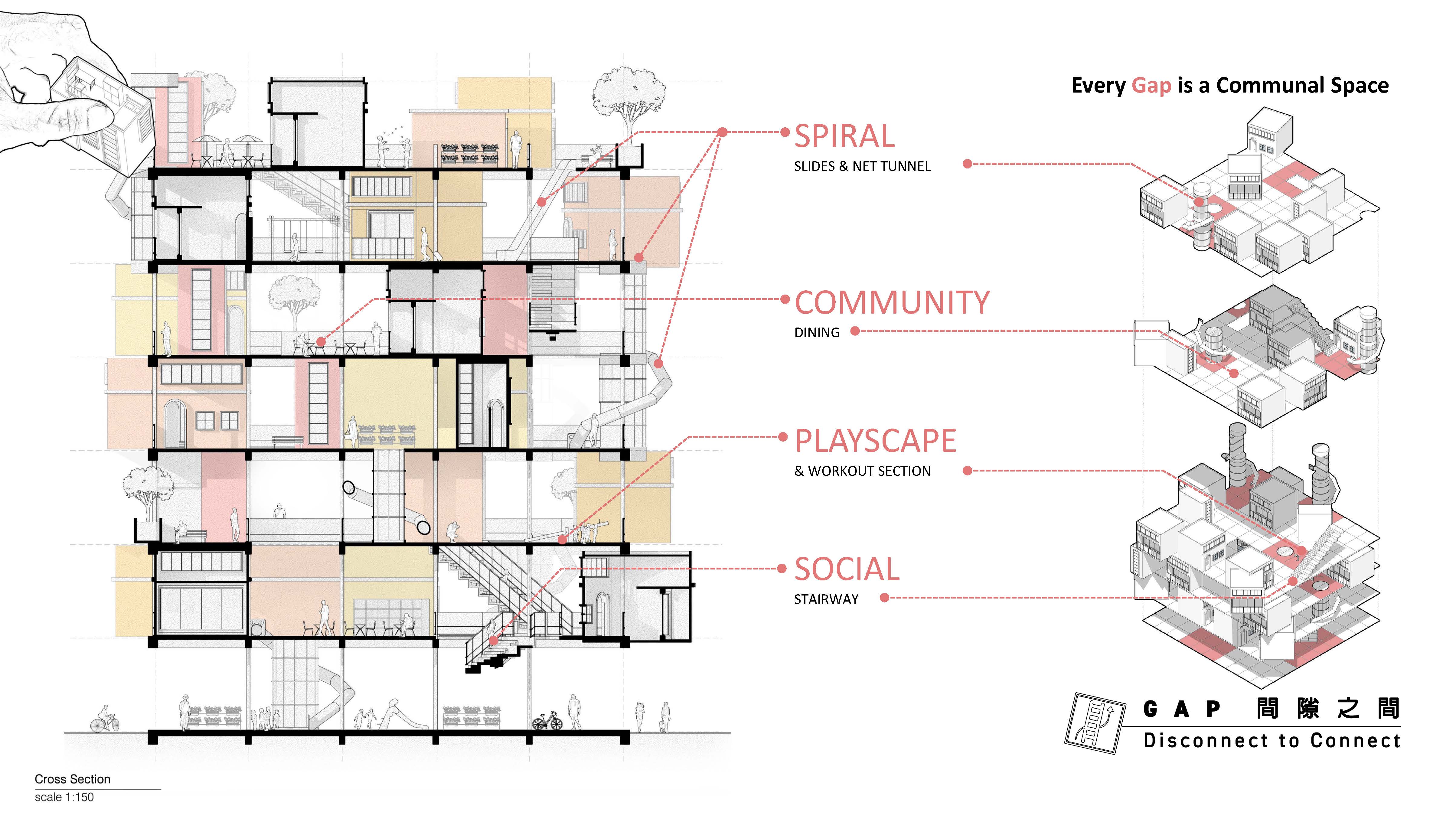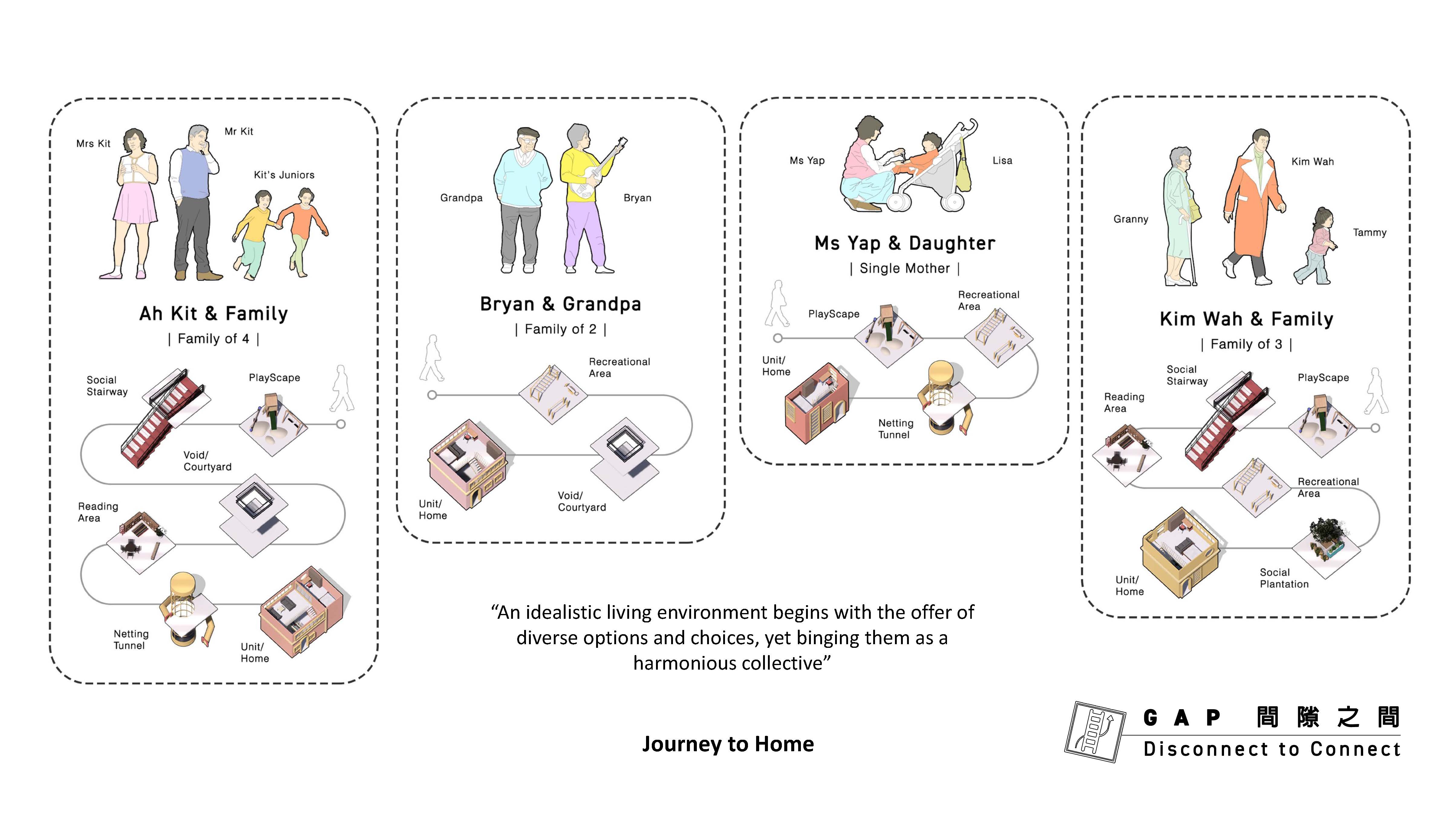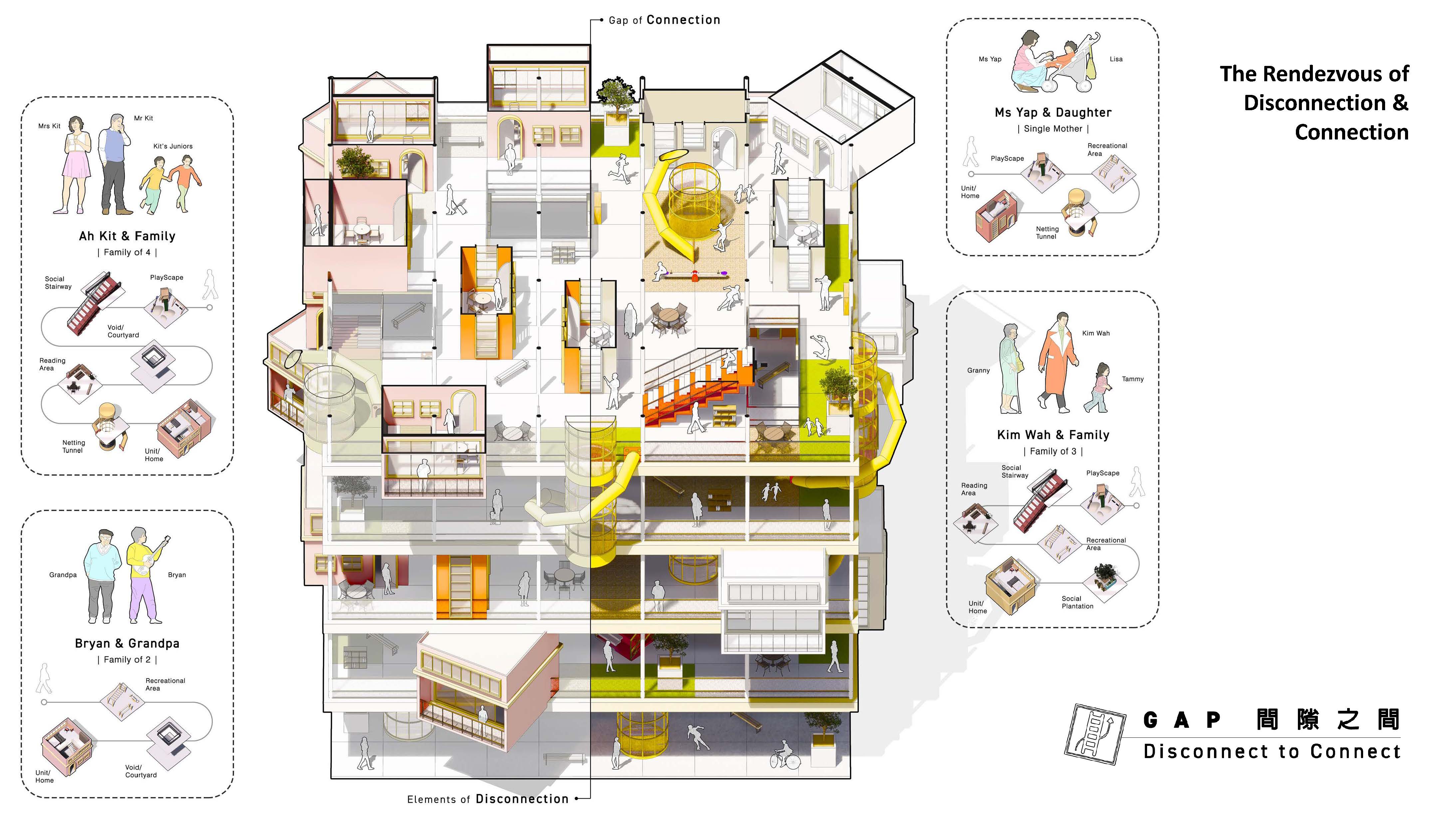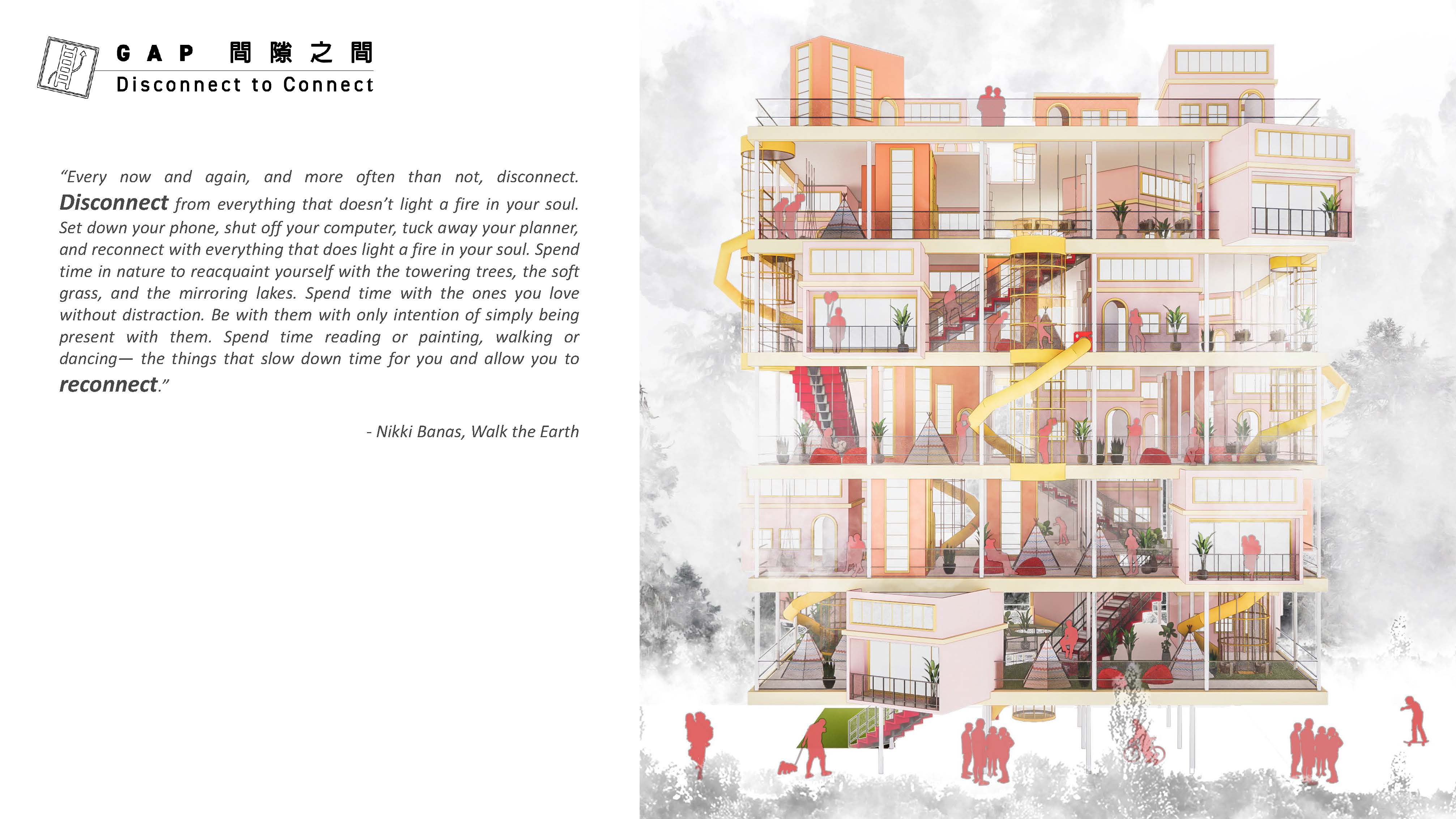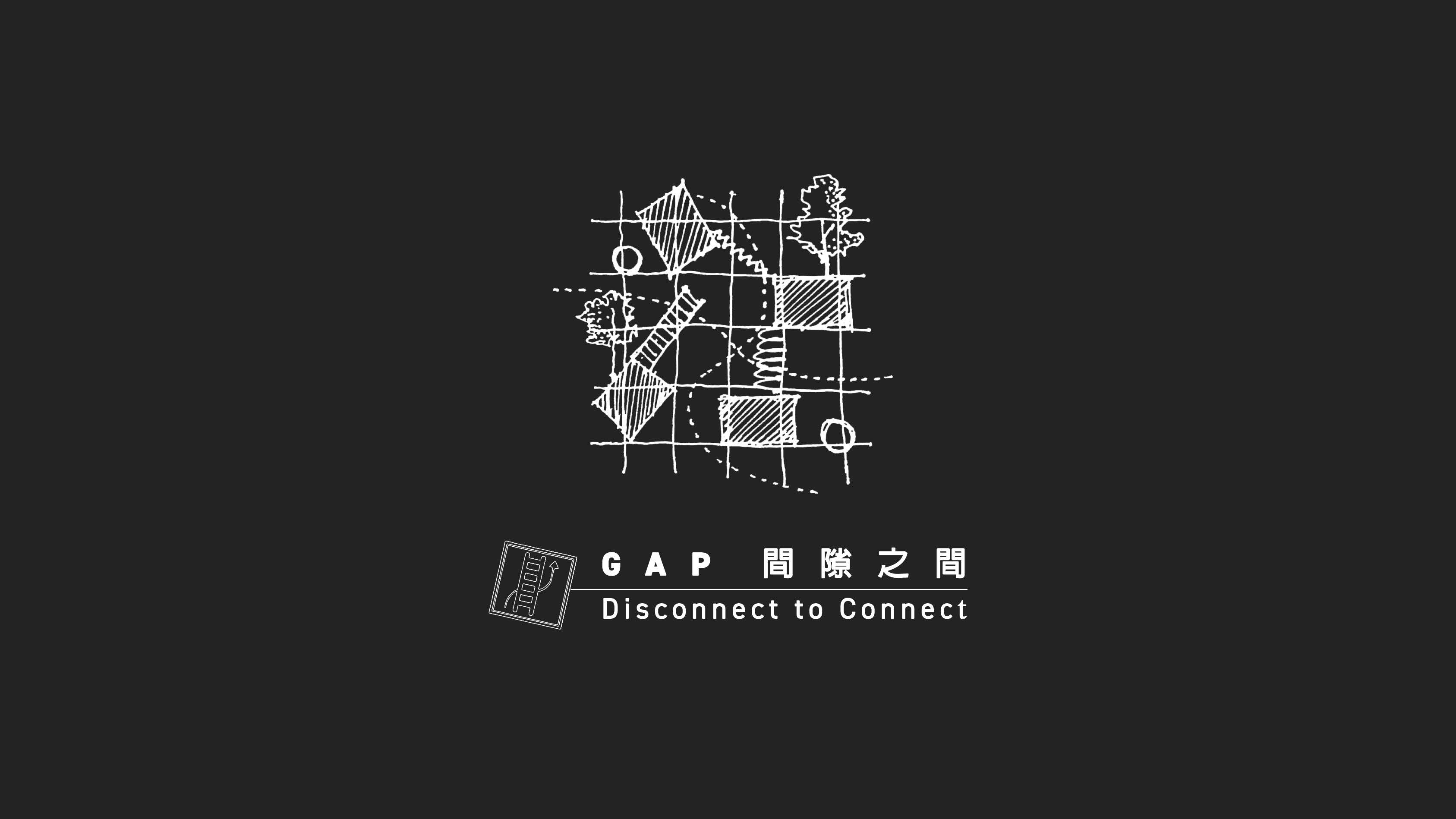
Inevitably, the pandemic outbreak had us to live in a different lifestyle as a new norm. People live with new proximity between one another, keeping a safe and distant ‘gap’ apart physically. Indeed, the social distancing that prevents spreading of disease should never be ignored, but the social connection in a high-dense urbanity is equally important to individual mental health. This ‘gap’ of social relationship is often latent and ambiguous, is now becoming more prevailing at this critical moment.
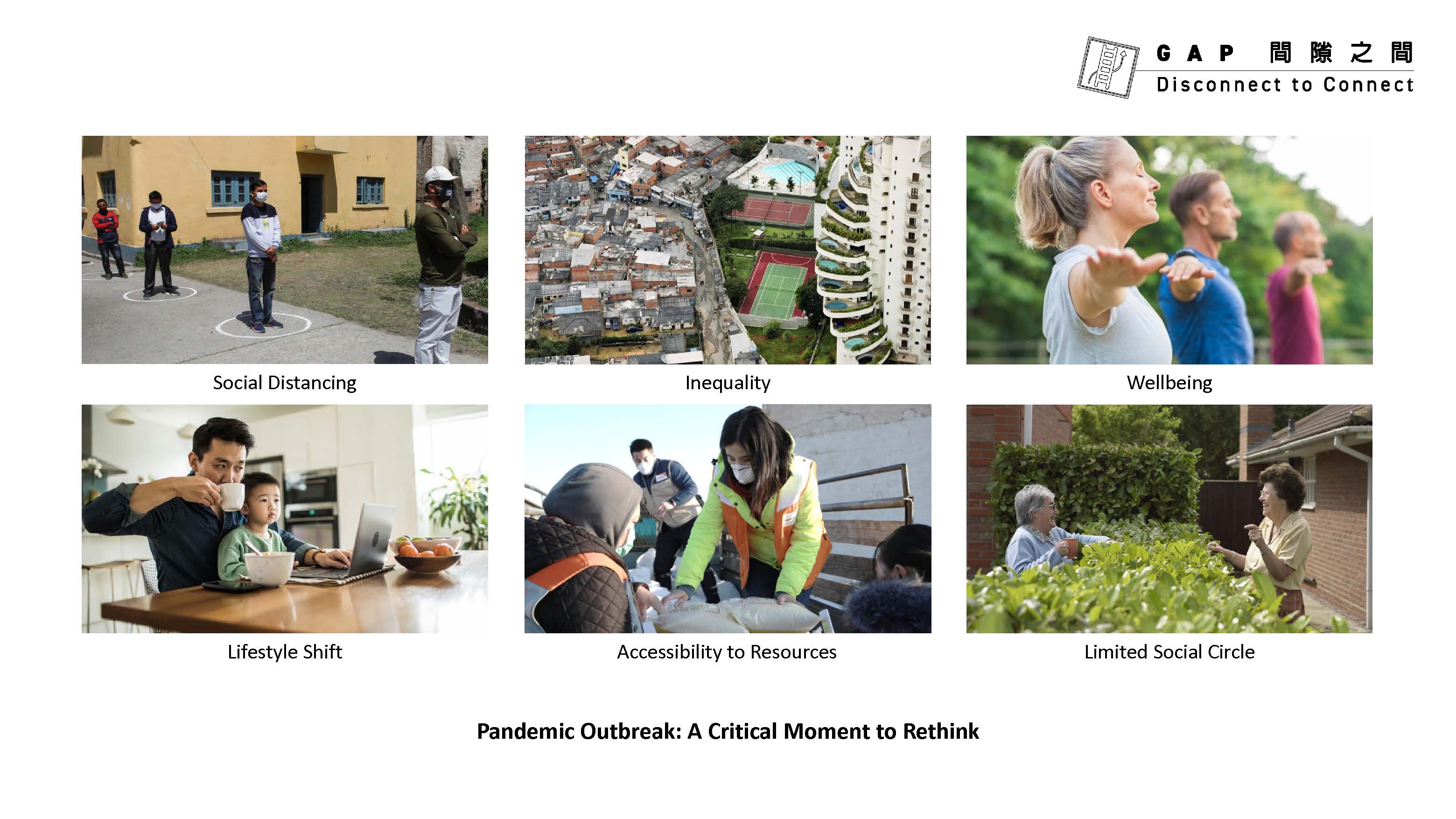
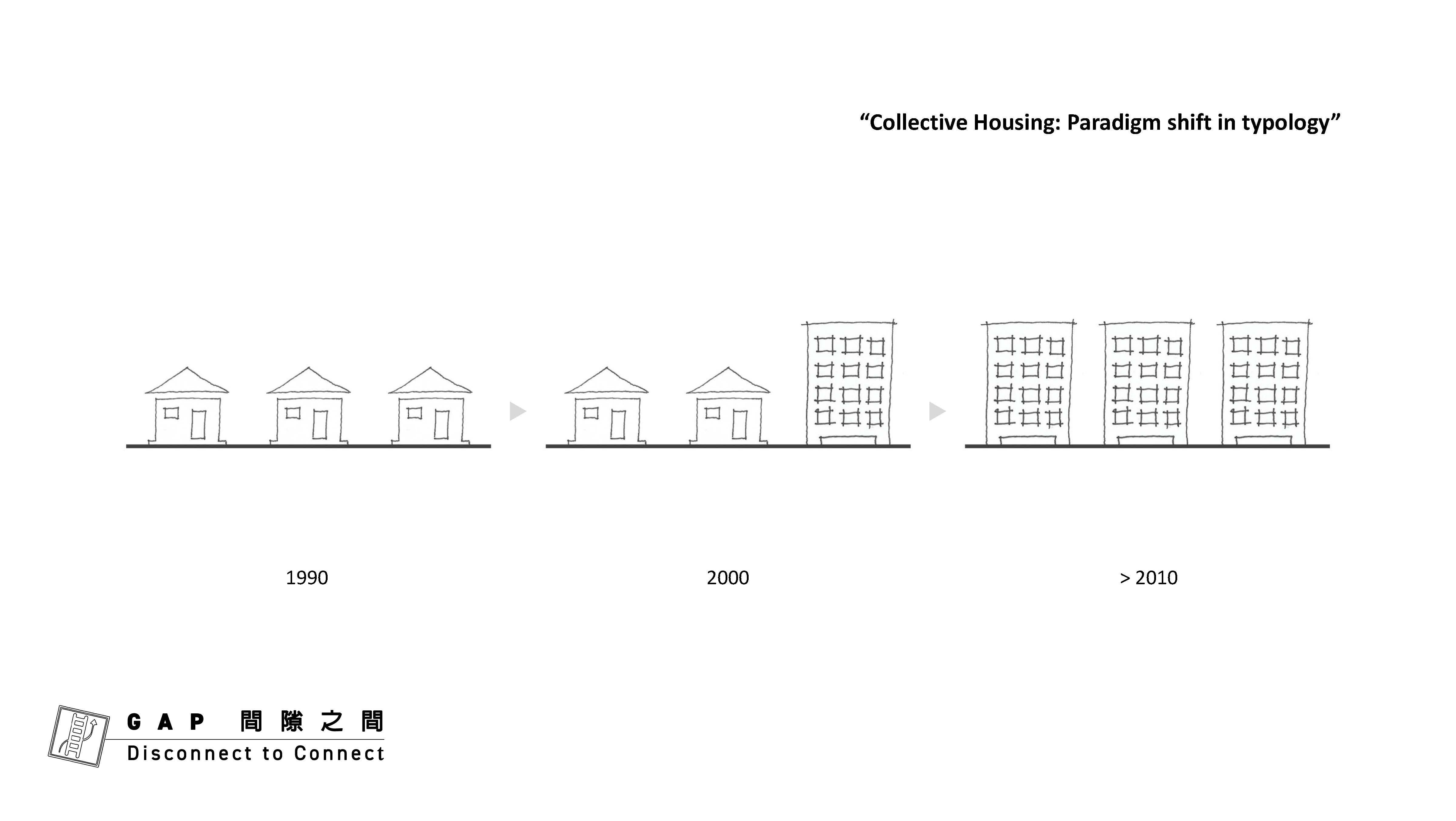
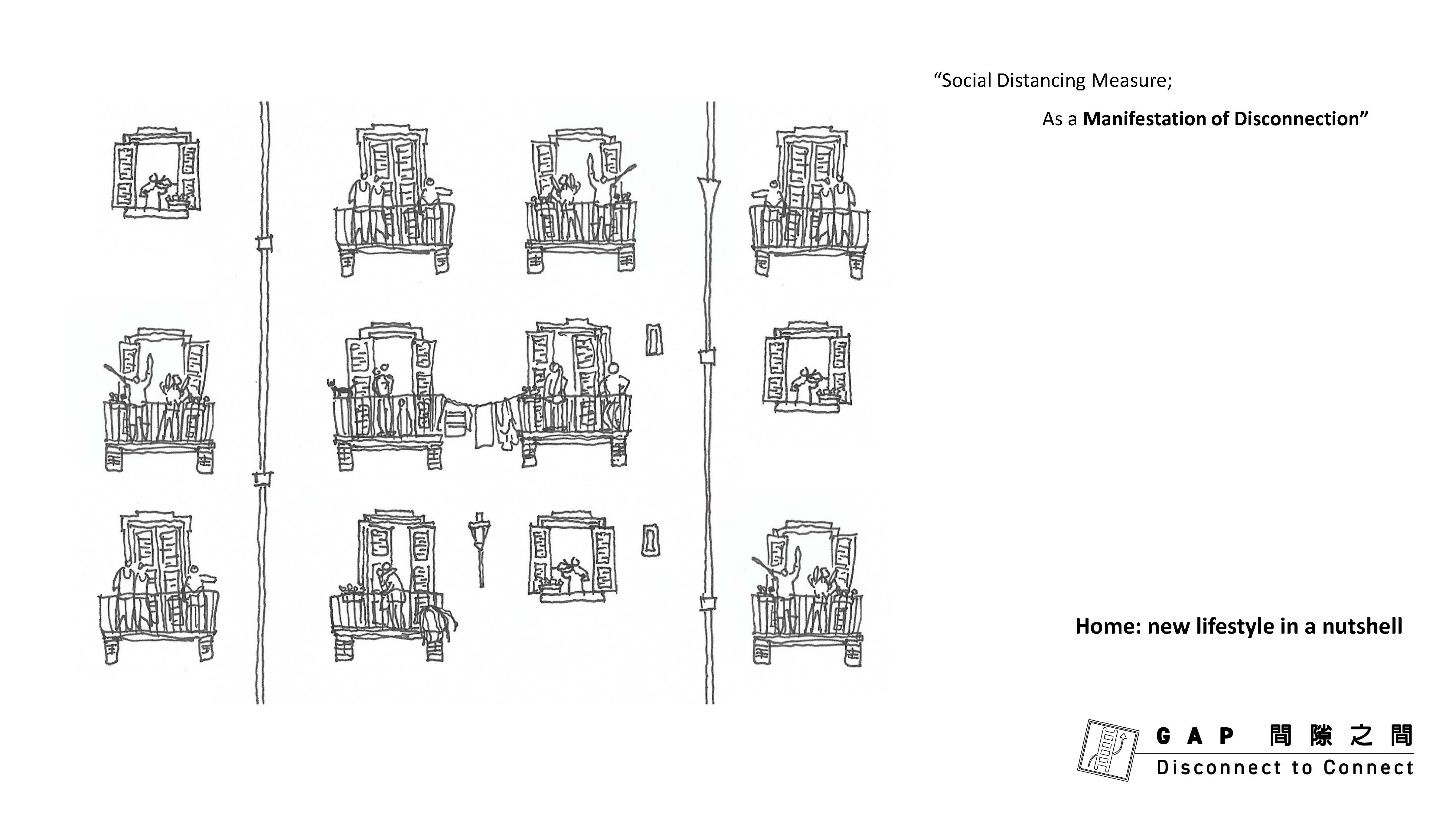
Nevertheless, how could we rethink this ‘gap’ to disconnect people as a safety measure, yet connect them socially at the same time? This question forms the overarching foreground of this theoretical proposal, fostering new idea to reconsider the ‘gap’ between people and their living spaces. Taking affordable housing as a template, we anticipate a paradigm shift of collective living in affordable housing from a rigid and organized framework into an self-exploratory odyssey.
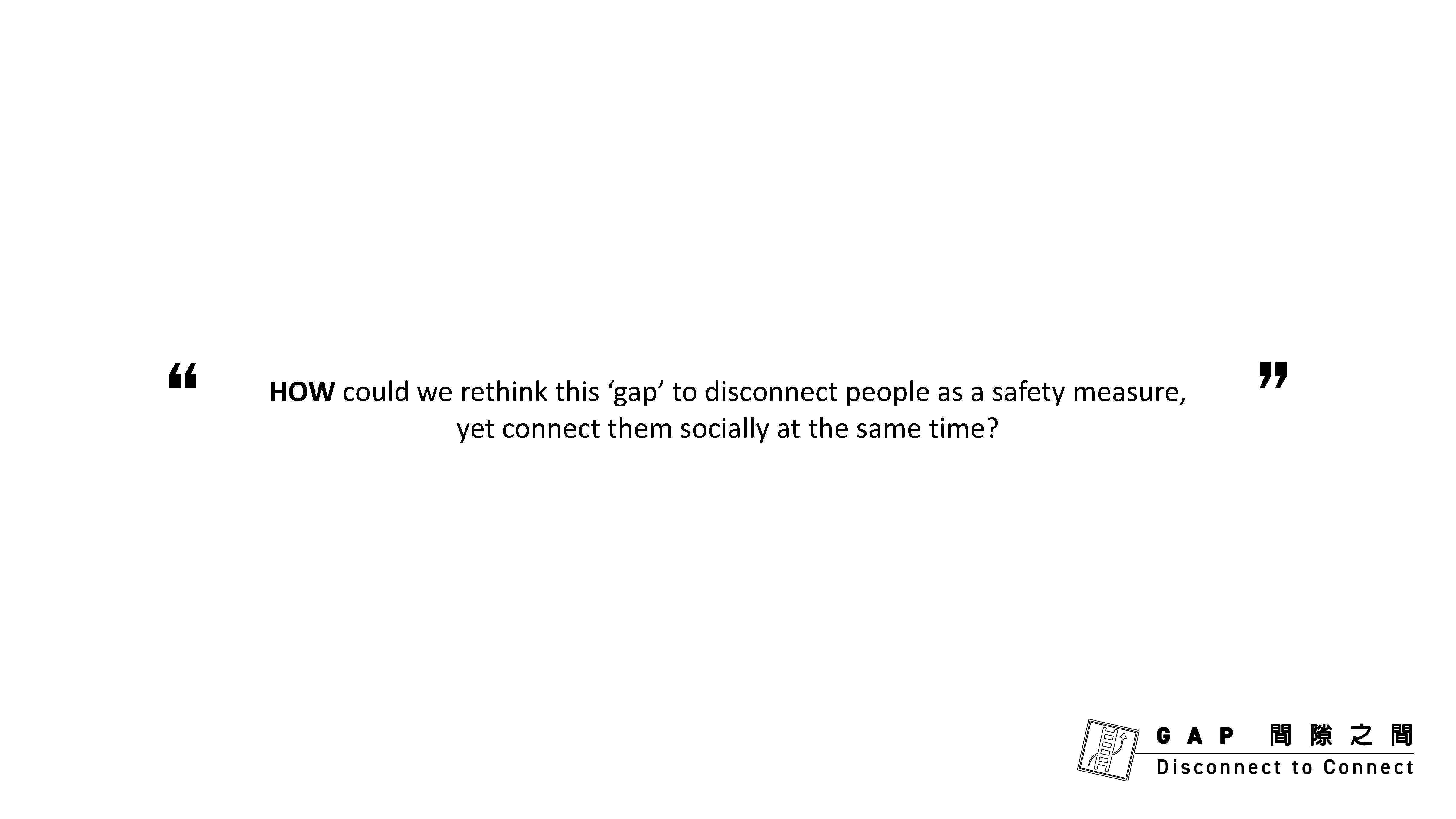
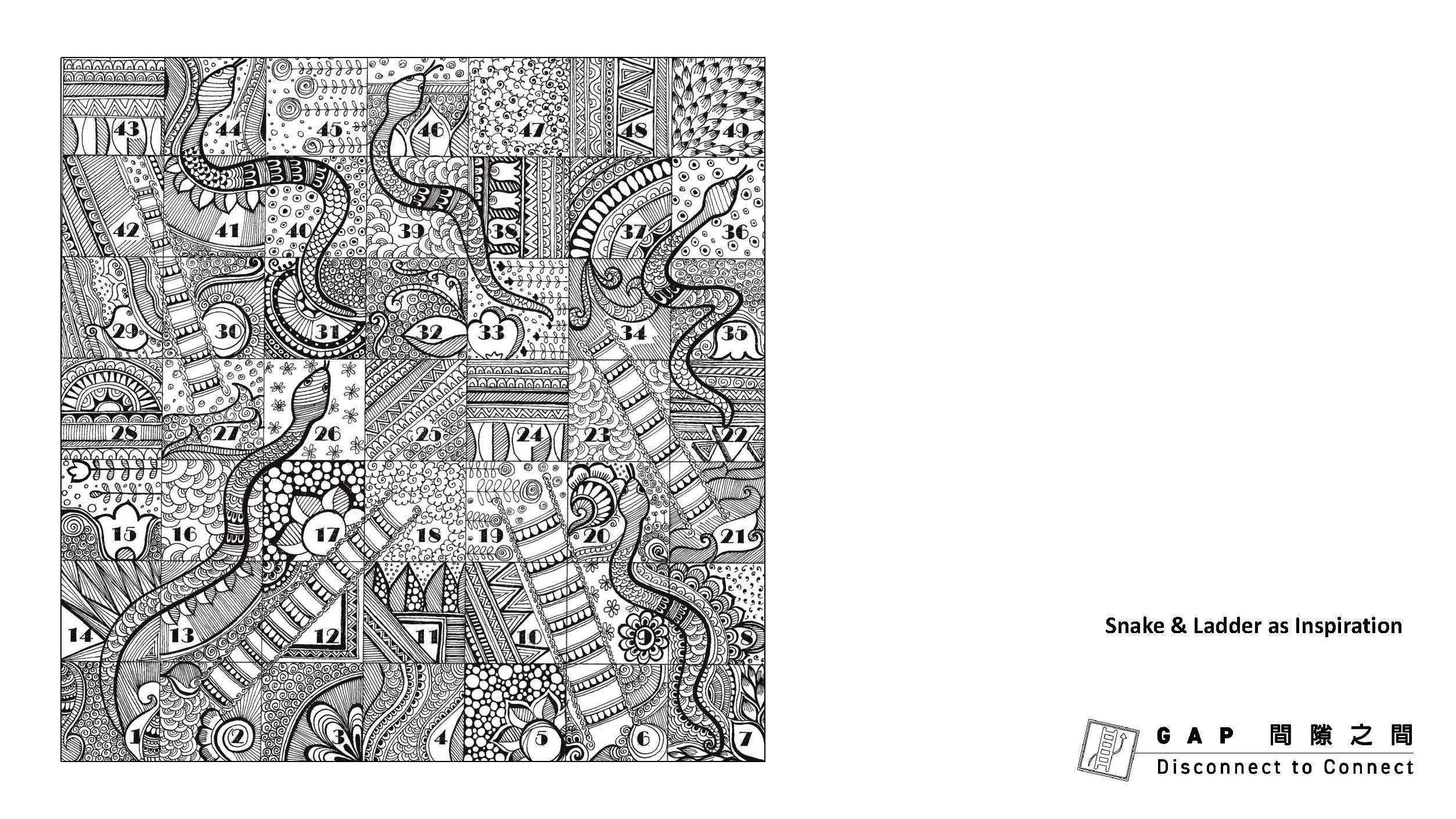
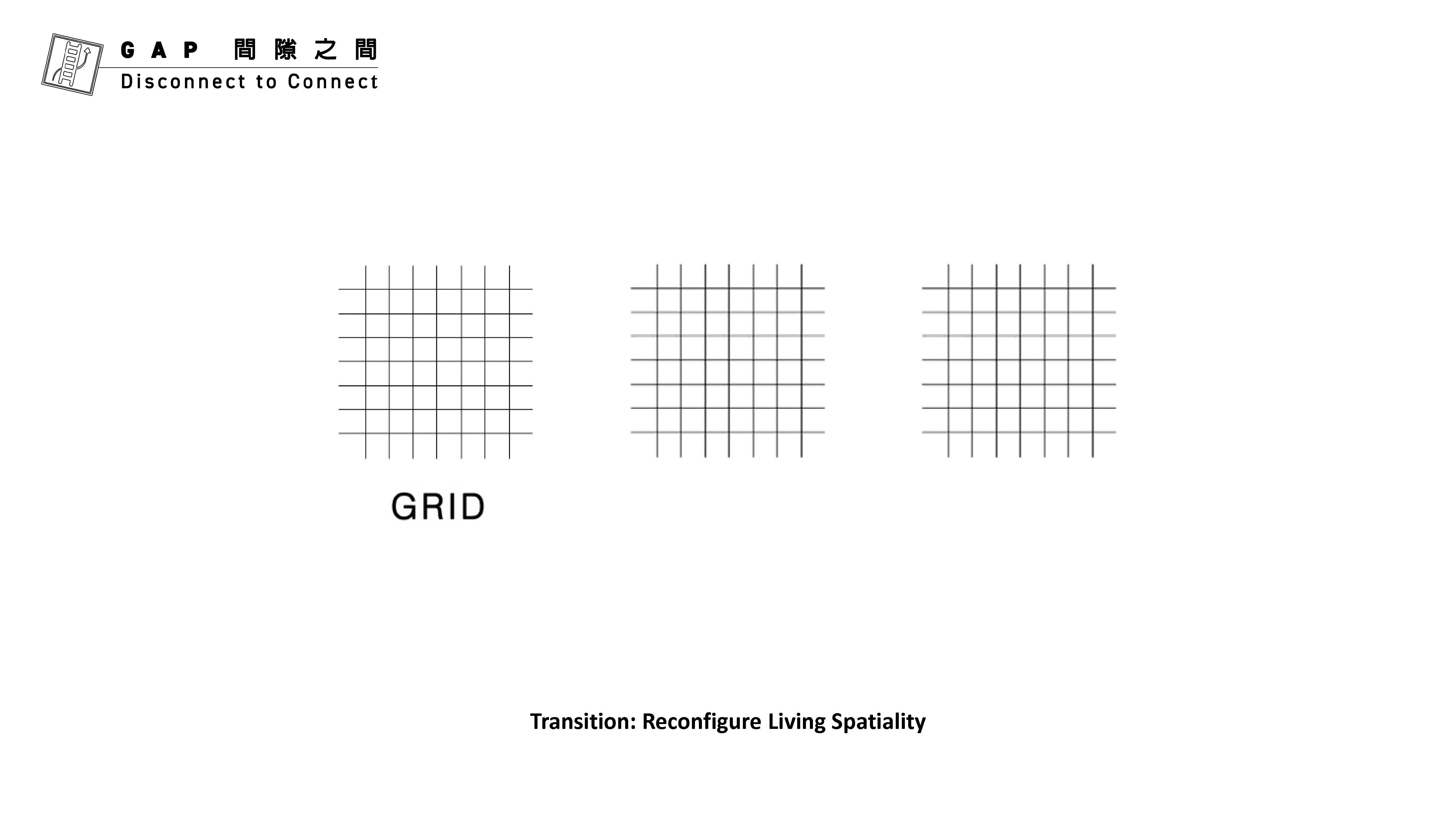
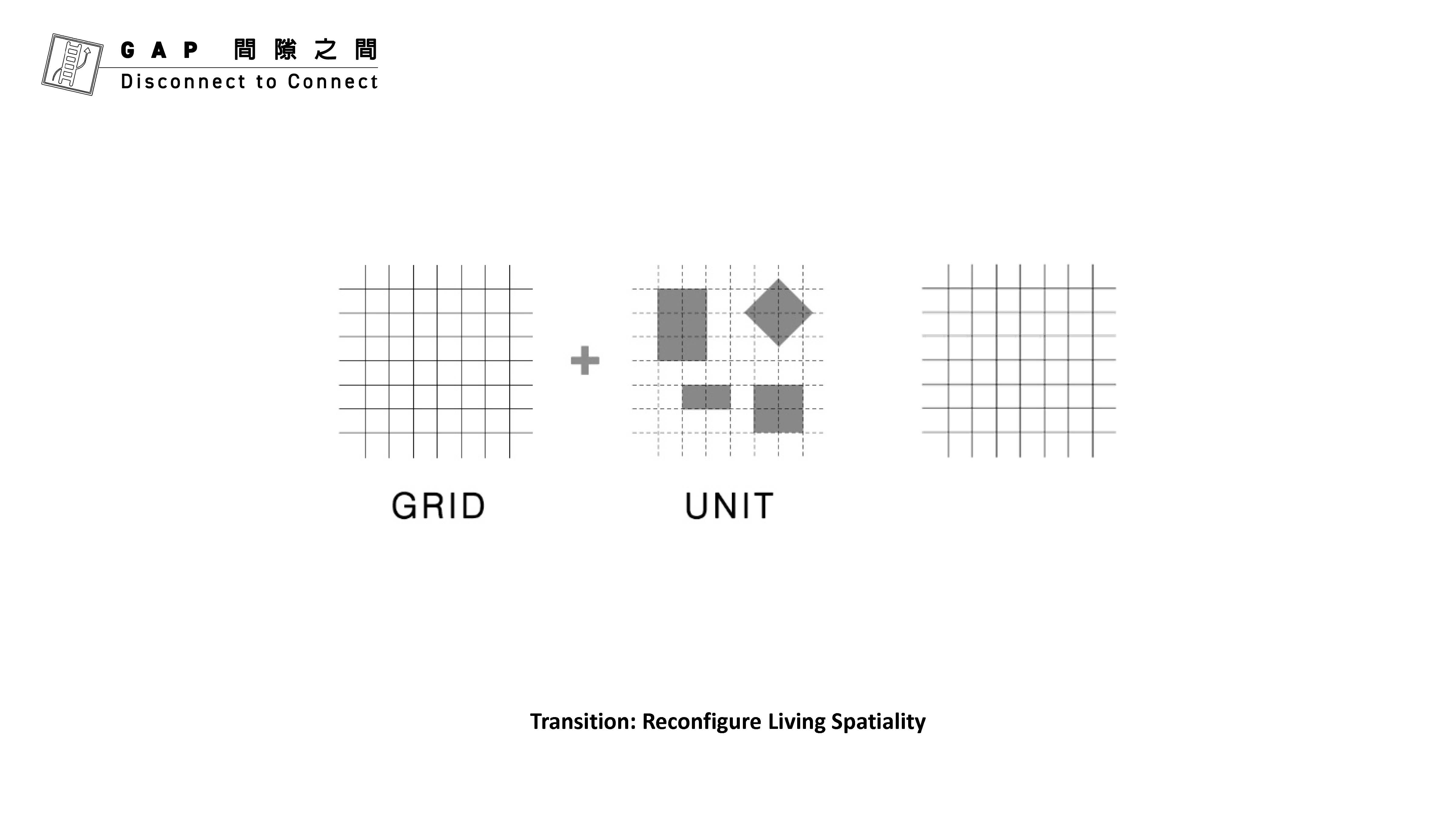
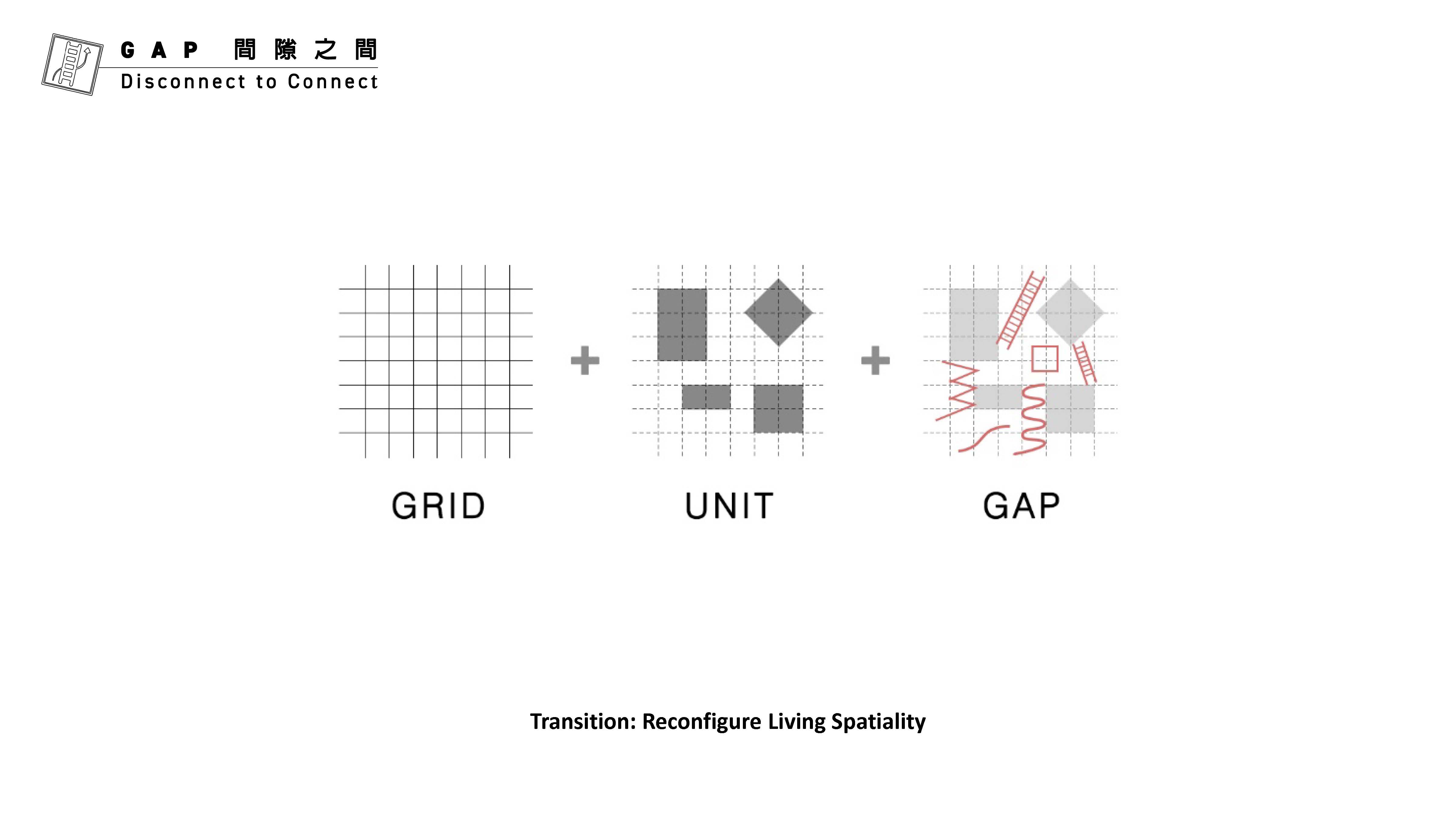
Analogous to the game of ‘snakes and ladders’, the architecture provides endless circulation with a series of alternating programme and alternating accessibility which initiate the disconnection within. This disconnection is dominated by a grid system that embraces the ‘gaps’ yet leaves a breathable space for the possibility of re-connection and human interaction. Amidst a gradually compact and fast-paced lifestyle within a city, the ‘gap’ is essentially vital for us to pause, ease, relief, and disconnect to connect once again.
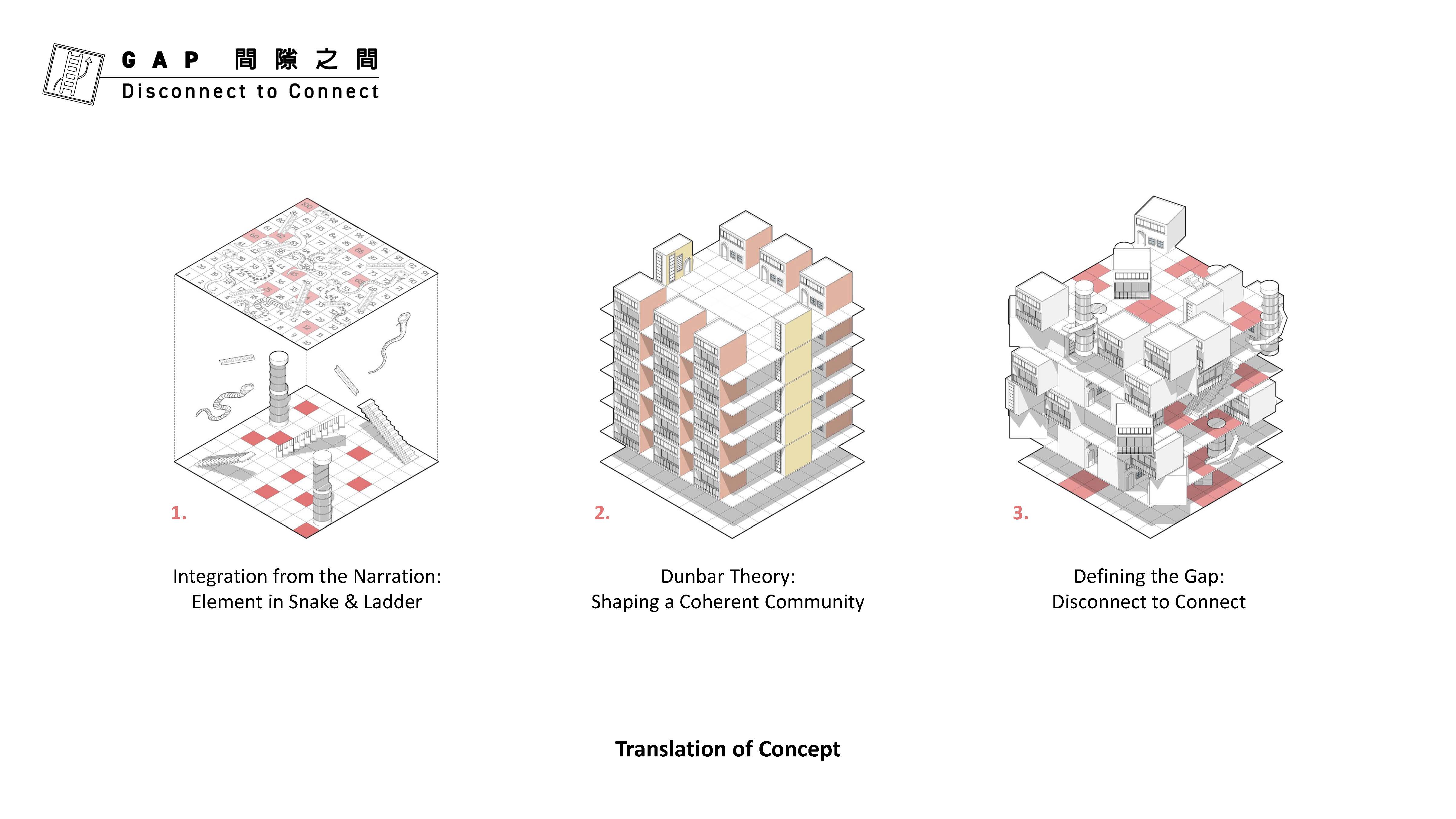
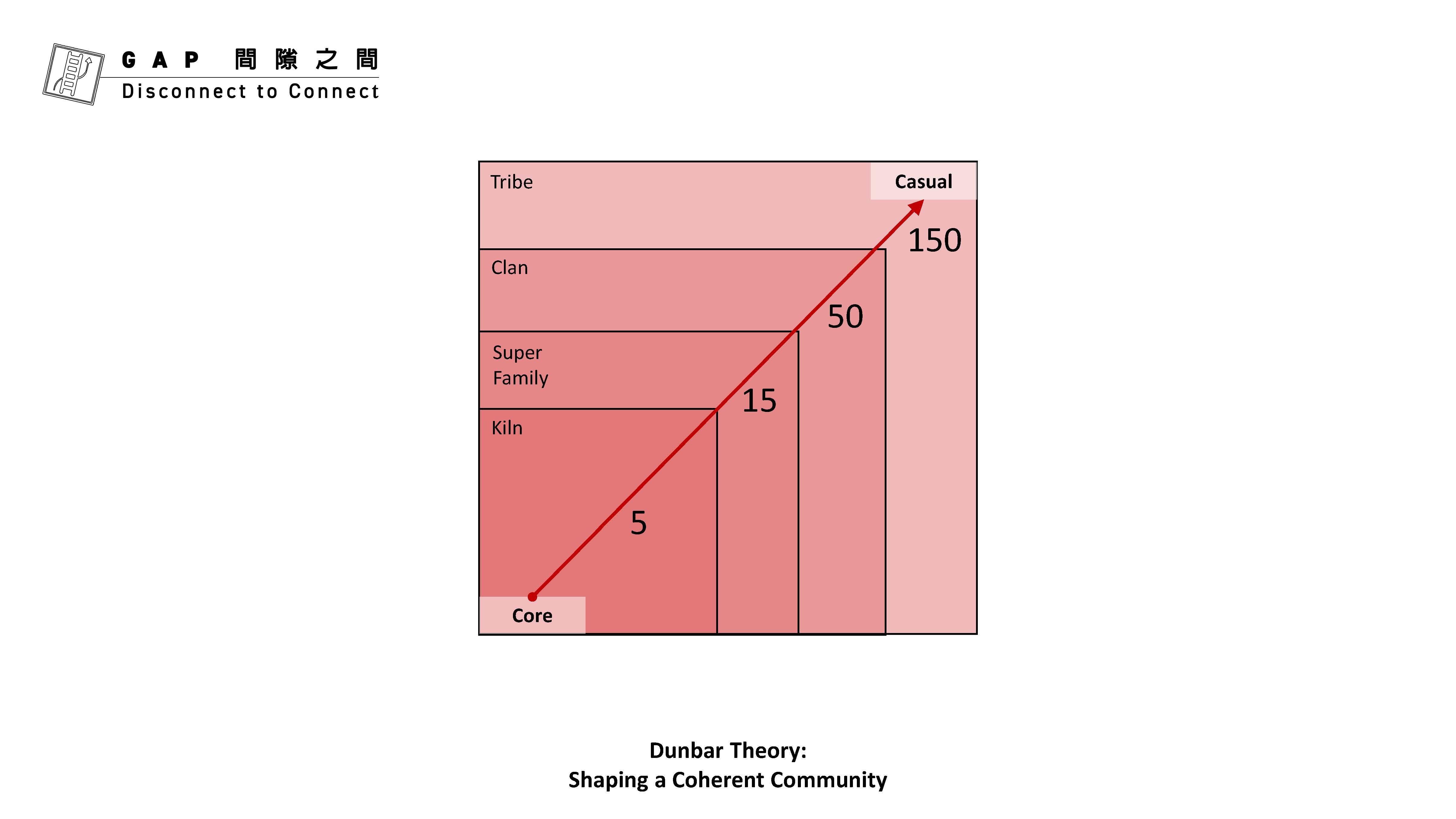
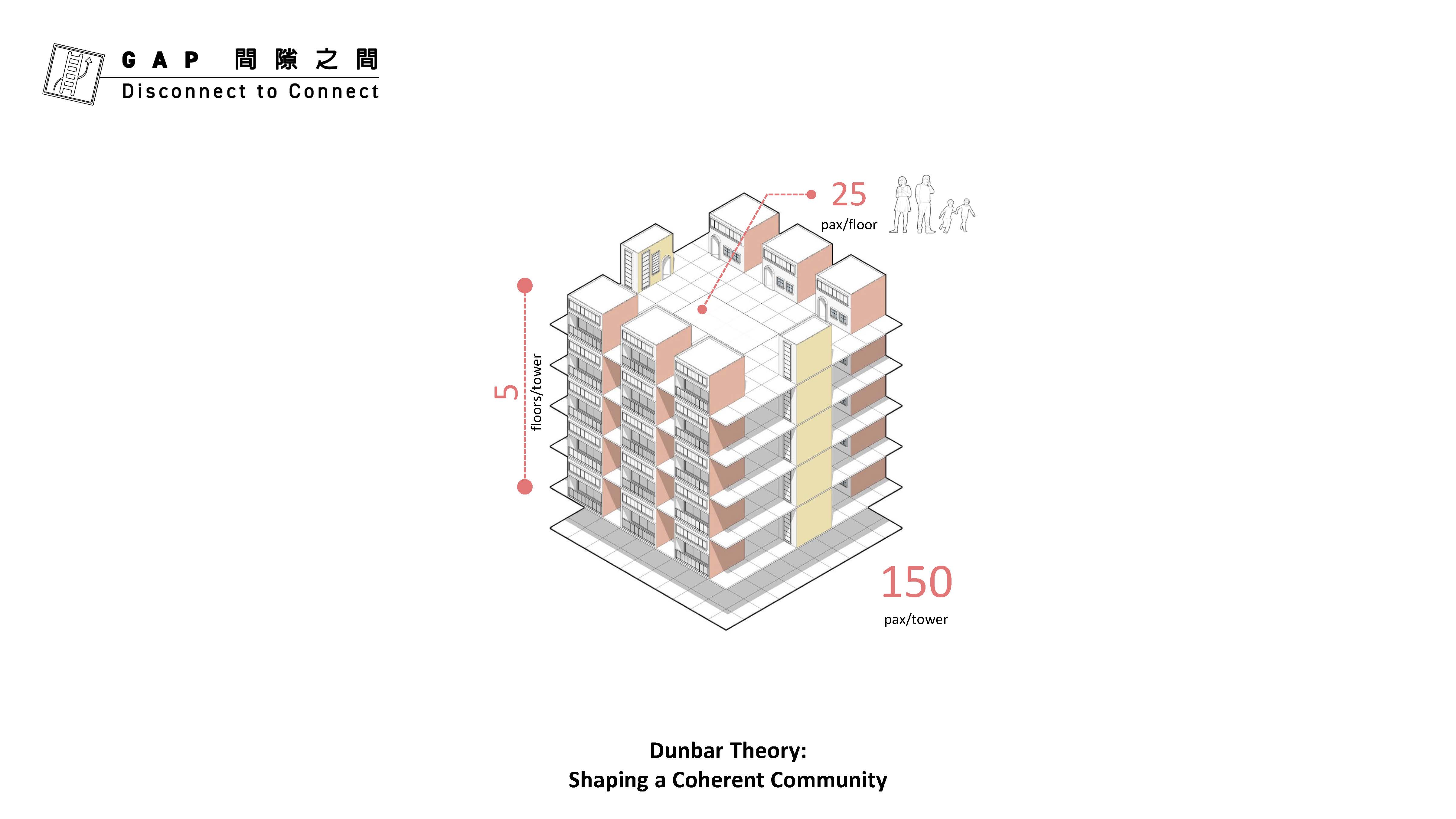
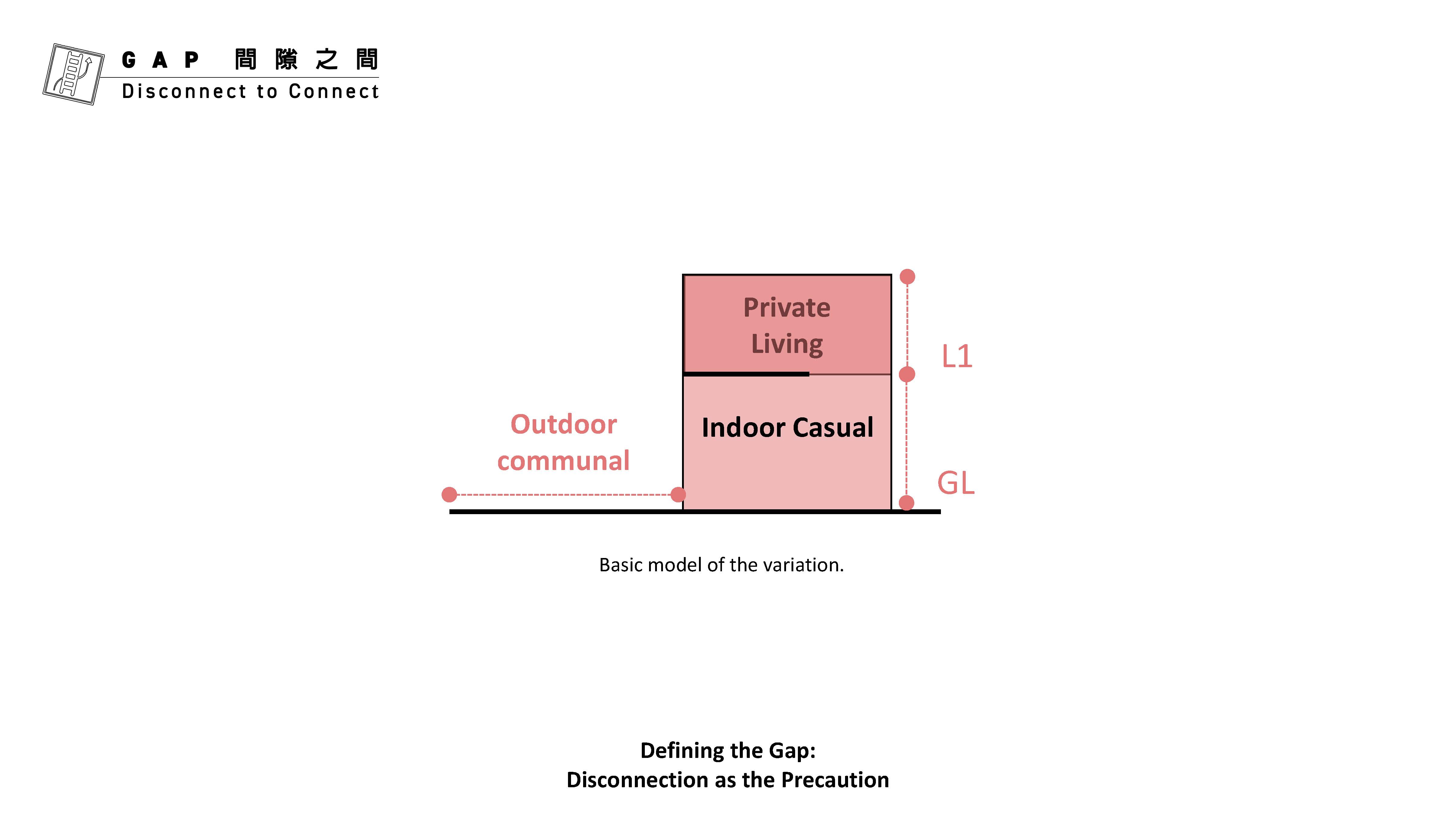
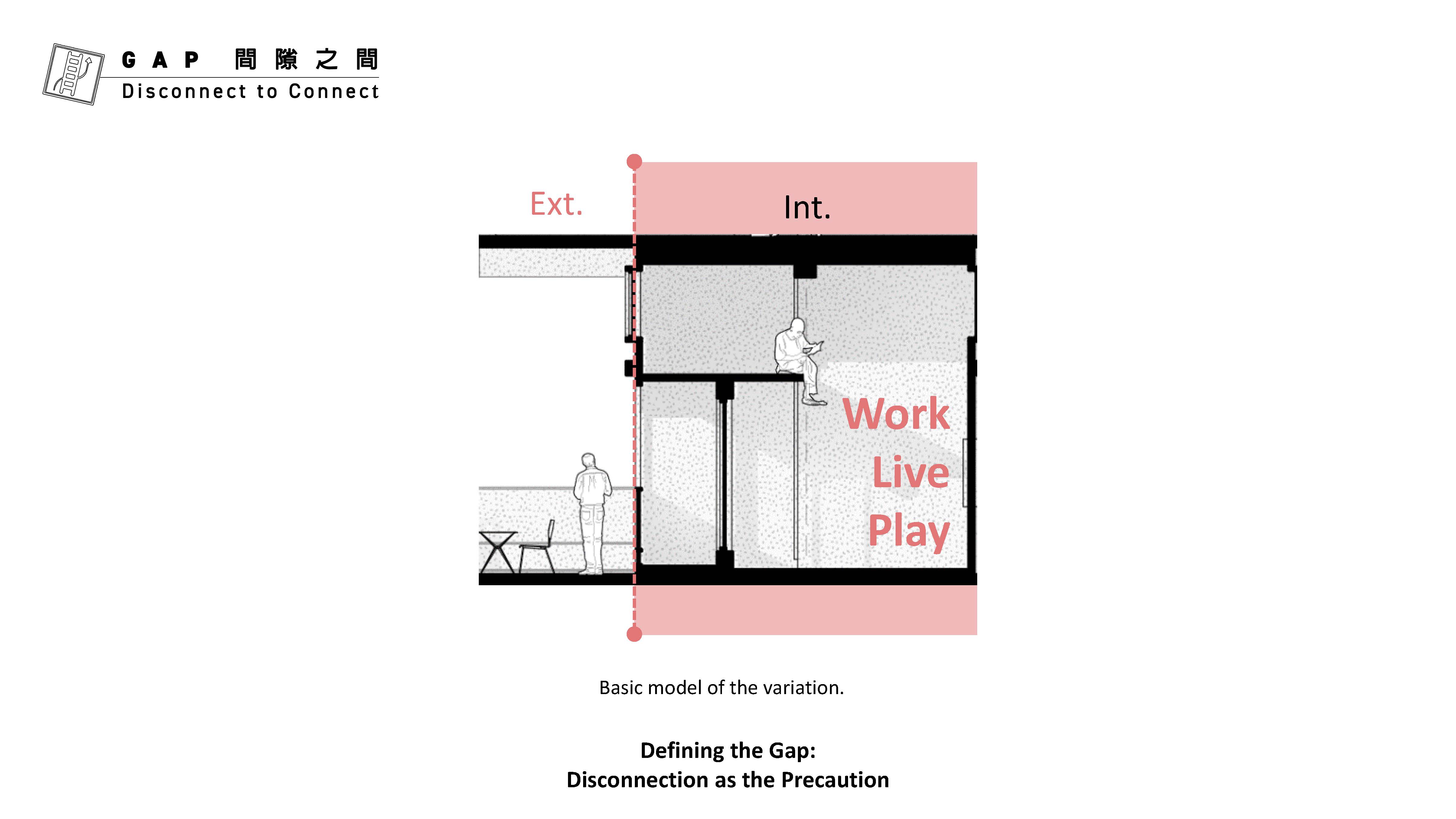
MIX & MATCH
Social clustering design of affordable housing is essential for social well-being according to Dunbar Theory. The architecture comprises types of unit specifically for different groups of inhabitants, which mix and match to create a diverse community at each floor. Between these units, it lies the gaps for extensive communal spaces either for interacting, social distancing, chitchatting or having fun. They are the buffer, the threshold, and the catalyst before the private living dimensions.
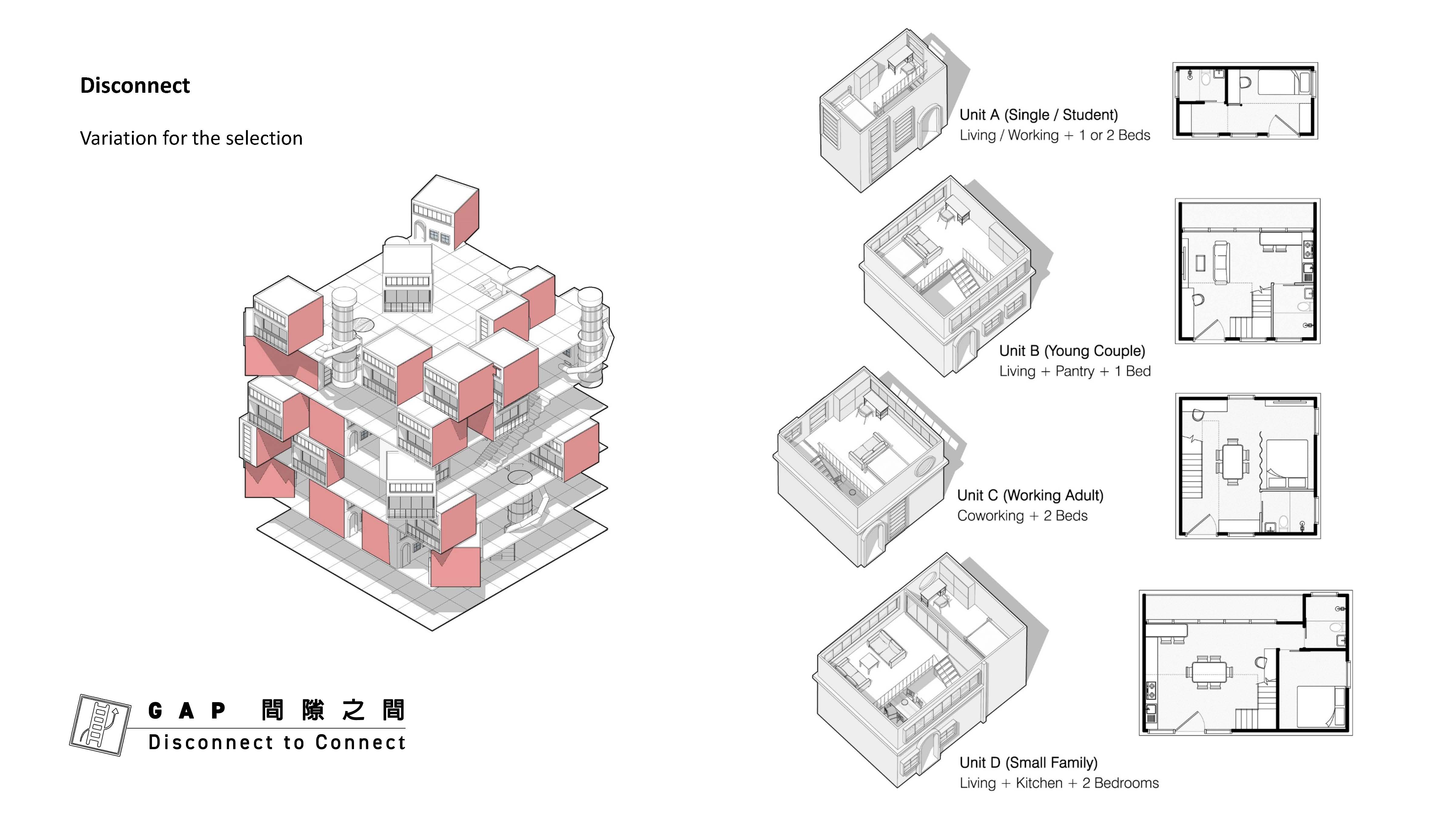
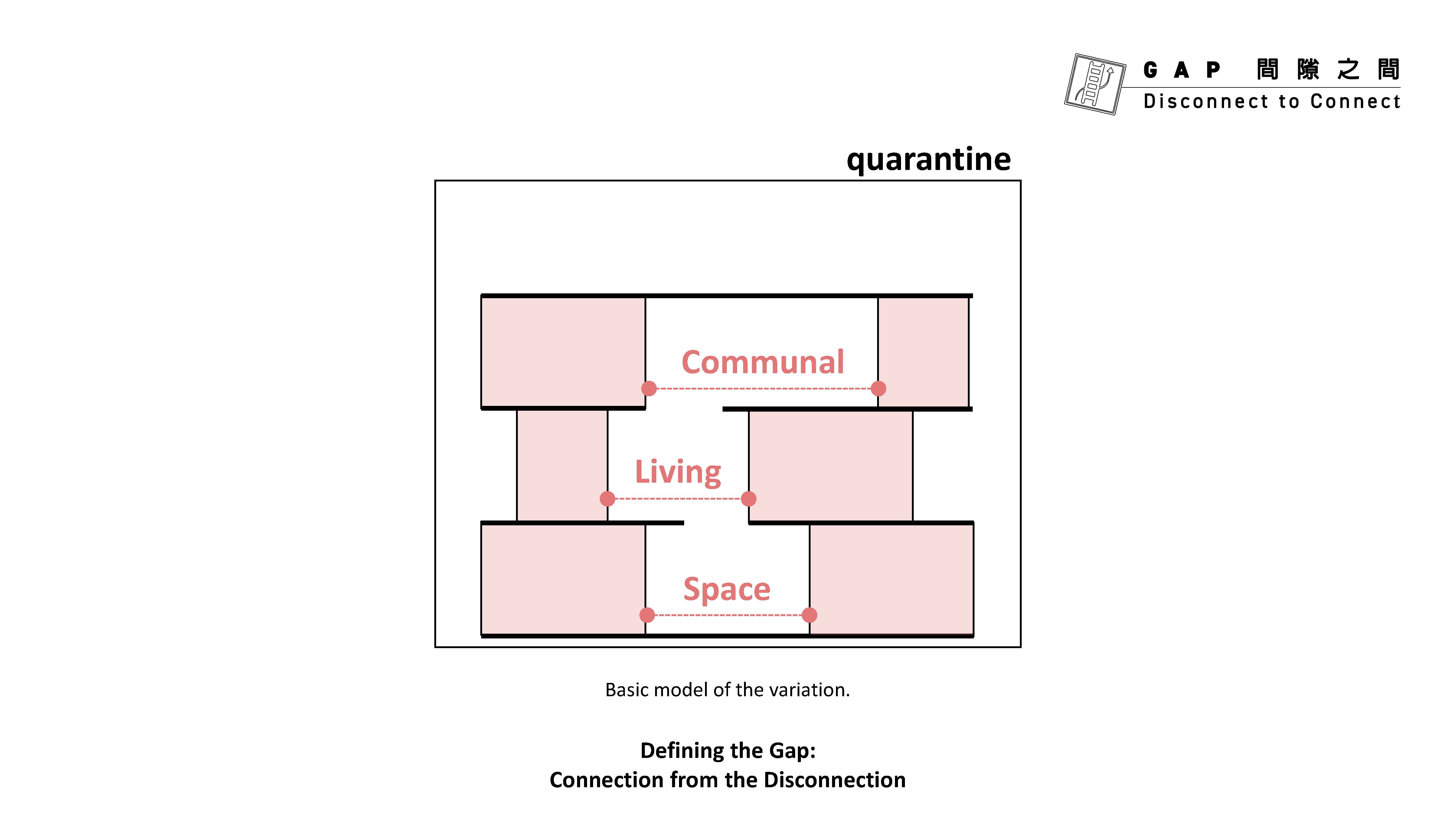
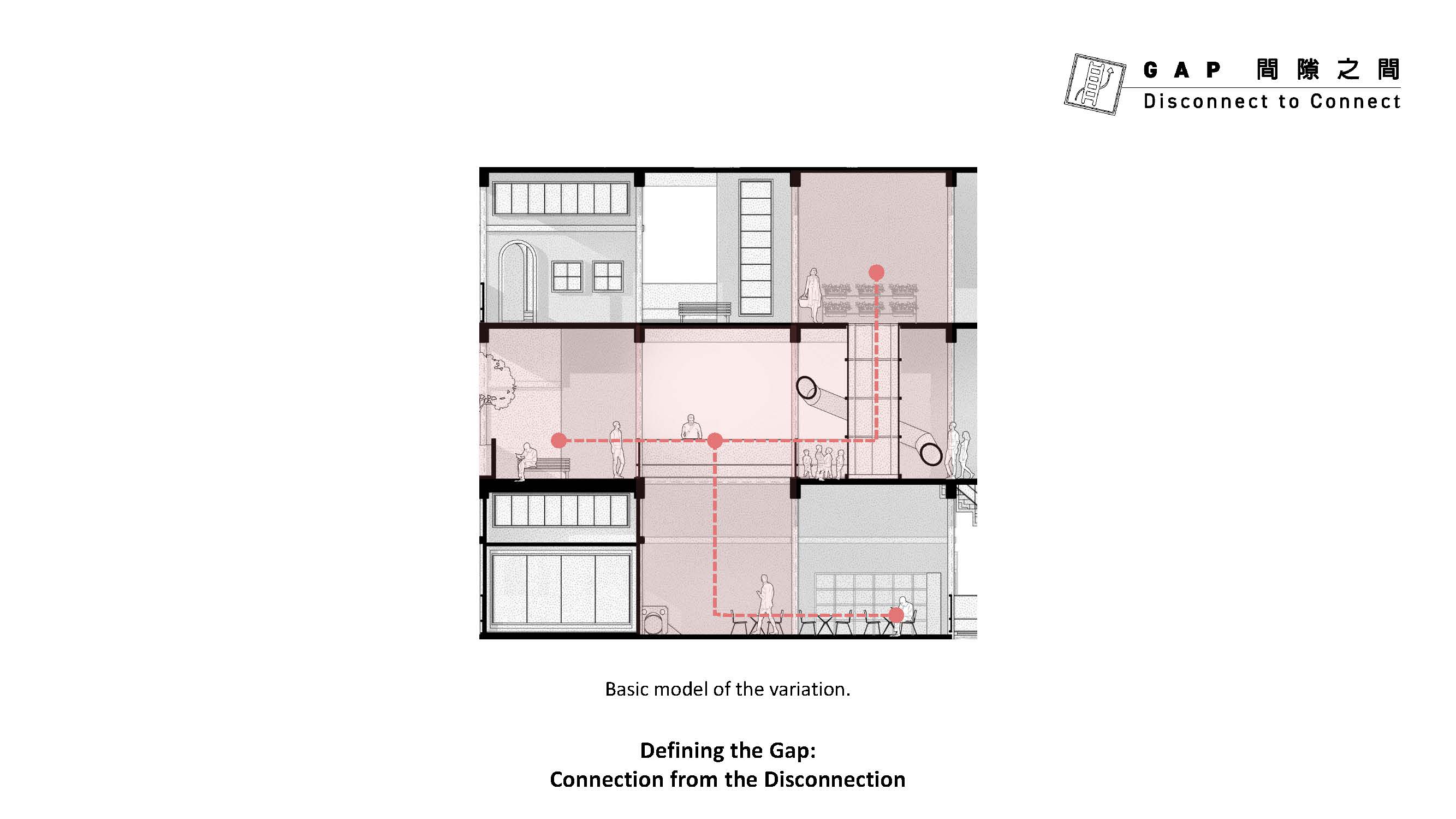
IN-BETWEEN
Unlike the generic housing, this collective living underlines the lifestyle of ‘in-between’ sandwiched between a bustie urban setting. It is a deep breath from the metropolitan living, an instant escape from the rigid tempo, and a constant negotiation between indoor and outdoor spaces. Apart from being a disconnection from the intense proximity, these ‘gaps’ are not bland emptiness but injected with diverse taxonomy of programmes-reconnecting and creating lives within.
